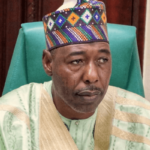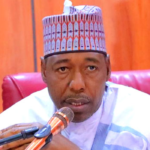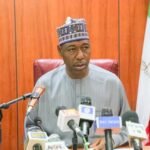Anyone aware of our country’s journey through gas flaring and the many failed attempts to end it would not be moved by the latest government-set deadline—2030. We set out on this path many years ago, right from the early days of Nigeria’s oil and gas prosperity in the 1960s. It began with the then Head of State, Yakubu Gowon, who told the international oil companies operating on our shores that they should stop flaring associated gas in 1974. But when that deadline arrived, nothing happened.
One thing has always been clear. When oil field operators opt to burn the ‘associated’ gas that accompanies oil production, or simply release it to the atmosphere, rather than capturing the gas with requisite equipment and pipelines, it is known as non-emergency flaring and venting. This practice not only harms the economy; it is detrimental to the survival of our natural environment. It is a key source of greenhouse gas emissions, which contributes to global warming and climate change.
Communities in areas where flare sites are located suffer untold hardships, not only because they are directly exposed to the toxic flares, but also because of associated trauma like deadly illnesses, poisoned food systems, and a reduction in life expectancy. To be sure, one of the direct impacts of gas flaring in the Niger Delta region of Nigeria is acid rain. The flared stack from associated gas in crude oil production emits huge deposits of toxins, which are a major cause of acid rain. There is now a consensus in our country’s science community that due to the huge quantity of sulphuric dioxide and methane in the region’s atmosphere, emanating from the petroleum industry through gas flaring, acid rain could only fall within the Niger Delta region.
To the economy, malpractice leads to billions of dollars’ worth of gas wasted annually in routinely flared gas. Data from the National Oil Spill Detection and Response Agency indicated that oil companies in Nigeria flared gas worth over $1bn from January 2022 to August 2023, resulting in a financial loss of N843bn. Indeed, energy experts say the gas wasted in Nigeria in 2022 could potentially generate 14,700 gigawatt hours of electricity. Instead, the flaring resulted in carbon dioxide emissions equivalent to 7,800 metric tonnes.
It is, therefore, understandable why successive governments tried to put an end to it. When Nigeria went back to democratic governance in 1979, President Shehu Shagari announced a definitive deadline for gas flaring for 1984. However, that too became a mirage. Sadly, from that day onwards, the ending of gas flaring became a case of continual shifting of the goalposts.
Importantly, though, we need to focus less on the dates and beam some spotlight on the process; this is the only way 2030 can become a reality. I believe we have been getting it all wrong with our approach. The end-gas-flaring drive seems to be done in a way that is not properly coordinated, thereby lacking universal impact. Over the past years, one would discover that the Presidency, National Assembly, and the ministries of environment and petroleum resources would not be on the same page. In this way, the private sector players in the industry take advantage of shoddy strategies and legal loopholes and continue flaring.
For instance, immediately after President Olusegun Obasanjo took over the helm in 1999, he announced a plan to end gas flaring in 2008 and directed that steps be taken to achieve the objective. After a delayed transition strategy, the Ministry of Petroleum Resources, in 2007, said it would fine companies $3.50 for every 1,000 standard cubic feet of gas flared from January 1, 2008, and would shut down oilfields that still burnt off gas associated with oil extraction after December 31, 2008.
Absurdly, though fines were introduced, a simple error in the wording of the law allowed companies to receive tax relief on these. By defining these fines as a ‘charge’, instead of a ‘penalty’, these costs were tax-deductible. This meant they were much more affordable than initially intended, and oil companies simply continued to flare while paying for these insubstantial costs.
It took a long time, over a decade, before the regulations were adjusted. As outlined in the July 2018 regulations, fines are now $2 per 1,000 SCF, where 10,000 barrels of oil or more are produced per day, and $0.50 per 1,000 SCF where less than 10,000 barrels of oil are produced a day. These fines are now labelled ‘flare payment’. But many stakeholders insist that it is too paltry and not enough incentive to dissuade companies from flaring and investing in gas-capturing infrastructure. I concur.
According to the OPEC statistical bulletin of 2018, Nigeria has the largest proven gas reserves in Africa and the 9th largest in the world (as of 2018), with 5,675 billion cubic metres (200.41 trillion cubic feet) of natural gas, while the country’s proven oil reserves is 36,972 million barrels (207.6 billion cubic feet) natural gas equivalent. This implies that Nigeria’s gas reserves are over 900 times the country’s total oil reserves. In addition, Nigeria accounts for 2.7 per cent of the global proven reserves of gas. Clearly, we must incorporate sustainable strategies to keep our enviable regional position.
Gas flaring is unacceptable, and it is gladdening that the Federal Government has continued to support several initiatives and actions to reaffirm its commitment to ending the practice of gas flaring in the country’s oil fields. Indeed, in the spirit of the Paris Climate Change Agreement, which we are a signatory to, the government has also committed to the Global Gas Flaring Reduction Partnership principles for global flare-out by 2030 while looking at a national flare-out target by 2025. But this is not enough.
In my view, the Nigeria Extractive Industries Transparency Initiative should be co-opted to ensure the installation of adequate metering infrastructure in the oil and gas sector operations. The agency will serve as an independent umpire to ensure that private companies give accurate data on the gases that accrue in their operations. This transparency in production calibrations, combined with the environmental plugs to be supplied by the Ministry of Environment, would give a strong nudge to industry players to erect the necessary infrastructure to end gas flaring before the 2030 World Bank zero-gas flaring deadline.
On December 13, 2016, while inaugurating the Nigerian Gas Flare Commercialisation Programme, the Federal Government announced its plan to end gas flaring in the country by 2020. But when D-Day arrived, it was a failed dream again. Then-Minister of Petroleum, Timipre Sylva, pushed it to 2025. Now that we are in 2025, the Chief Executive Officer of the Nigerian Upstream Petroleum Regulatory Commission, Gbenga Komolafe, announced that plans were underway to end gas flaring in 2030. According to him, the NUPRC is effectively spearheading the national drive to achieve the zero-flare target by 2030 and net-zero carbon emissions by 2060.
Perhaps, this time, it will work. The date is no longer ours; it is tied to a global agenda known as the Zero Routine Flaring by 2030 Initiative, which commits governments and oil companies to end routine flaring no later than 2030. If we stick to this, we shall be positioned for better resource management and enhanced economic development, environmentally friendly oil production, global recognition, accelerated innovation, and an ecosystem amenable enough to attract experienced oil industry investors. In other words, a double celebration awaits Nigeria in a situation whereby it can fulfil key Sustainable Development Goals by 2030.







